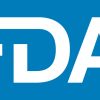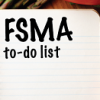The Food Safety Modernization Act (FSMA) Section 204—known as the Food Traceability Final Rule—aims to ensure food safety through enhanced traceability of high-risk foods. By mandating structured tracking and tracing of food products from farm to fork, the rule not only minimizes the risk of contamination but also provides a rapid recall mechanism if needed. With FSMA 204, food manufacturing companies must take a significant step toward enhancing food safety and protecting public health.
This article delves into what the new traceability rule means for food manufacturing companies, the operational challenges involved in complying with FDA’s requirements, and how advanced product traceability solutions can help organizations turn compliance into a competitive advantage.
FSMA 204 Compliance: 3 Key Components.
FSMA 204 requires food companies to implement robust traceability systems focusing on three key components:
- Food Traceability List (FTL):
The FDA’s FTL identifies high-risk foods (e.g., nut butters, leafy greens, fresh-cut produce) that require enhanced recordkeeping. For instance, nut butters must be tracked carefully through the supply chain due to their inclusion in the FTL. - Key Data Elements (KDEs):
For every step, the FDA mandates the collection of detailed data:- Source Details: Information about where the product originated (e.g., the distributor’s business name, address, and facility details).
- Destination Details: Where the product is being sent (e.g., the chocolate manufacturer’s facility).
- Product Details: Specifics such as product description, lot numbers, quantities, units of measure, and packaging information.
- TLC Source Details: In cases where a product is repackaged (e.g. when a distributor repackages nut butter and assigns a new Traceability Lot Code), the original source must be captured.
- Critical Tracking Events (CTEs):
These are specific points in the supply chain where traceability records must be maintained. Examples include:- Shipping: For example, when a distributor ships nut butter from its warehouse to a chocolate manufacturer, the shipment date, origin, destination, and unique traceability lot code are recorded.
- Receiving: Upon arrival, the chocolate manufacturer confirms the product’s integrity, quantity, and the corresponding lot code.
- Transformation: When the chocolate manufacturer or its co-manufacturing partner transforms the nut butter by incorporating it into chocolate bars, details of the process—such as production dates, ingredients used, and the new lot code—are documented.
This detailed approach ensures that every touchpoint is recorded, enabling rapid identification of the product’s journey if a recall or investigation becomes necessary.
Operational Challenges in FSMA 204 Compliance
Implementing these enhanced traceability systems is not without its challenges.
- Fragmented Data Sources: Data complexity due to various sources/formats and variable data attributes makes data management, accuracy, and accessibility across different stakeholders a challenge. For example, while a distributor might capture shipment data in one system, the manufacturer could use an entirely separate ERP to receive and transform details. This is where an ERP-agnostic product traceability solution can help enterprises with seamless ingestion and harmonization of data.
- Data Completeness and Standardization: Without standardized data capture methods, many companies risk having incomplete records. Consider a scenario where different suppliers use varying formats for lot numbers or unit measurements, complicating the integration process.
- Real-Time Data Visibility: The regulation demands immediate access to traceability data—which is critical during a recall or contamination event. Legacy systems, which rely on manual data entry or batch uploads, may fall short of meeting these time-sensitive requirements.
- Interoperability Between Systems: Many companies use diverse ERP, WMS, and legacy systems that do not naturally communicate with each other. Integrating these into a single, cohesive traceability framework is a significant hurdle.
- Supplier and Partner Readiness and alignment: Smaller suppliers or those in less digitized environments (e.g., field operations still using pen-and-paper logs) can slow down the entire compliance process, requiring additional training and technical support. Formats and protocols to share and receive the KDE data also need to be aligned with partners.
- Compliance Reporting and Monitoring: Businesses must generate accurate compliance reports and monitor traceability requirements continuously, which can be difficult without an integrated digital solution.
Business Impact and Analysis
Achieving FSMA 204 compliance offers more than just meeting a regulatory requirement—it creates real business value:
- Enhanced Brand Trust:
Transparent traceability systems boost consumer confidence. When a company can quickly and accurately trace a product’s journey—from the distributor’s repackaging of nut butter to its final transformation into a chocolate bar—it reassures consumers about the safety and quality of the product. - Operational Efficiency:
Streamlined, digital systems reduce manual entry errors, cut down on time delays, and optimize the recall process, ultimately lowering costs and increasing supply chain efficiency. - Risk Mitigation:
A well-integrated traceability system reduces the risk of prolonged contamination exposure, minimizes financial losses, and helps maintain a company’s reputation by enabling swift action during food safety incidents.
FSMA 204 Compliance Checklist for Your Organization
A brief checklist your organization can use to ensure continued FSMA 204 compliance:
- Review & Update Your Traceability Plan:
Confirm that your traceability plan clearly details procedures for recording Critical Tracking Events (CTEs) and Key Data Elements (KDEs) across all stages—from receiving nut butter to its transformation into a finished product. Include updated traceability lot code assignments and designate a clear point of contact for FSMA inquiries. - Verify Data Accuracy and Accessibility:
Ensure that all records (whether electronic or paper) are complete, legible, and easily retrievable within 24 hours upon FDA request. Test your systems through internal audits and mock recalls to confirm data integrity. - Align with Supply Chain Partners:
Engage with co-manufacturers, co-packers, and distributors to confirm that all parties share consistent traceability records. Establish written agreements that outline data sharing and process responsibilities for each Critical Tracking Event (CTE). - Invest in Technology & Traceability Solutions:
Evaluate your current systems to determine which Key Data Elements (KDEs) are already being captured and where they reside. Identify any gaps or modifications needed to meet FSMA 204 requirements. This assessment will help you decide if your existing ERP, inventory, or traceability software needs upgrades or integration with new digital tools. Investing in dedicated traceability solutions ensures that your organization can reliably capture, manage, and share the required data across all Critical Tracking Events, ultimately strengthening your compliance and food safety efforts. - Staff Training and Continuous Improvement:
Regularly train your staff on FSMA 204 requirements and recordkeeping practices. Update standard operating procedures as needed and keep documentation of training sessions to demonstrate compliance readiness.
By following these steps, your organization will be well-positioned to not only meet FSMA 204 requirements but also enhance overall operational efficiency and food safety throughout your supply chain.
Conclusion
FSMA 204 compliance requires a detailed, standardized, and real-time approach to traceability and rigorous record-keeping requirements.
This is where a cloud-based, globally scalable product traceability solution can ensure regulatory compliance in a dynamic landscape, enhance operational efficiency, food safety, and transparency, as well as collaboration among supply chain partners. Moreover, food manufacturing companies can overcome traceability challenges that impede long-term compliance by embracing digital solutions that integrate specific examples and granular data capture—from shipping details to transformation records.
Comprehensive traceability systems are thus essential as they enable food manufacturing companies to reduce the time to track product movement across disconnected supply chains, enhancing visibility and empowering both organizations and consumers to make informed decisions.
Resources:
https://www.fda.gov/food/food-safety-modernization-act-fsma/food-traceability-list








